Thermoplastic Elastomers
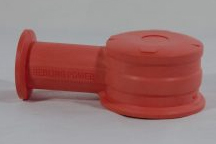 Flexible Thermoplastic elastomers are injection molded by Rebling for a multitude of applications. The ability of these thermoplastic materials to be processed via conventional plastic injection molding equipment, as well as their inherently short cycle times compared to cure times for thermoset rubbers, have provided engineers and designers with a lower cost alternative when specifying flexible plastic materials. In addition, there are standard compounds available that provide a choice of mechanical properties, hardness, chemical resistance, and flexibility not readily available with thermoset rubbers.
Flexible Thermoplastic elastomers are injection molded by Rebling for a multitude of applications. The ability of these thermoplastic materials to be processed via conventional plastic injection molding equipment, as well as their inherently short cycle times compared to cure times for thermoset rubbers, have provided engineers and designers with a lower cost alternative when specifying flexible plastic materials. In addition, there are standard compounds available that provide a choice of mechanical properties, hardness, chemical resistance, and flexibility not readily available with thermoset rubbers.
Rebling molds thermoplastic elastomers for components such as cable strain-reliefs, over-molding of handles or other components, aircraft helmet applications, and medical devices.
Properties of Thermoplastic Elastomers
Thermoplastic elastomers are available in durometers typically ranging from 30 to 95 on the Shore A hardness scale depending on the class of material selected.
These flexible materials, commonly referred to as TPRs or TPEs, typically belong to four classes of thermoplastics: the olefinics; polyurethanes; polyester copolymers, and styrenic block copolymers. PVC is another option for flexible thermoplastic materials.
Two types of Styrenic elastomers are available for plastic injection molding. The Styrene-Butadiene-Styrene (SBS) block and the Styrene-Ethylene/Butylene-Styrene (SEBS) block. Trade names for these materials include KRATON® D and KRATON® G respectively. The SEBS block elastomers have higher temperature resistance and can withstand prolonged outdoor exposure while the SBS block should be limited to indoor applications. Both types are resistant to water, acids, and bases, but both are also attacked by solvents. Both types can be molded in a variety of colors.
Polyurethanes are known for their excellent abrasion resistance and load carrying capability. Polyester, polyether, and polycaprolactone based urethane grades work well with the plastic injection molding process. The polyester types exhibit better mechanical properties while the polyether types have improved low temperature properties and resistance to hydrolysis. The polycaprolactone group offers improved hydrolysis resistance compared to the polyester based urethanes while offering similar mechanical properties.
All of the urethanes can be molded in a wide selection of colors and are available in many grades for specific applications including flame retardant grades.
The Olefinics possess the lowest density of all the thermoplastic elastomers. DuPont's Engage® is an example of this material which is available in clear and colored grades. Olefinic offer excellent flexibility at temperatures approaching -60 °F.
Polyester copolymers provide flexibility and fatigue strength over a broad temperature range. DuPont's Hytrel® is an example of this type of elastomer. This group is generally higher in price than the olefinic and styrene based elastomers.
Designing Guidelines for Thermoplastic Elastomers
Rebling design engineers have extensive experience in optimizing plastic part designs for functionality, cosmetics, cost, and processing. As with other thermoplastic materials, maintaining uniform wall thickness throughout the part is essential in producing an aesthetically pleasing molding. Ribs and gussets should be used to core out thick sections. The rib thickness should not exceed 50% of the intersecting wall thickness. Bosses incorporated in the design can also result in sink marks if not properly designed. To minimize and eliminate these issues, Rebling engineering staff should be consulted prior to issuing a final design. This design assistance is provided free of charge.


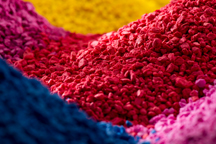 Thermoplastic
Thermoplastic ABS
ABS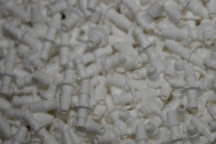 Acetal
Acetal Acrylic
Acrylic EMI
EMI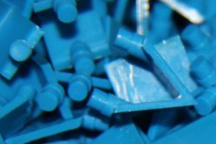 Noryl (PPO)
Noryl (PPO) Nylon (Polyamide)
Nylon (Polyamide)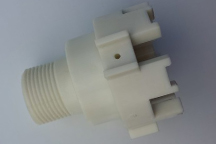 Polybutylene Terephtalate (PBT)
Polybutylene Terephtalate (PBT) Polyether Ether Ketone (PEEK)
Polyether Ether Ketone (PEEK) Polycarbonate (PC)
Polycarbonate (PC)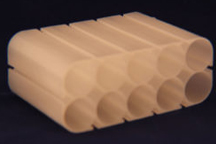 Polyethylene (PE)
Polyethylene (PE)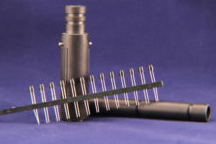 Polyphenylene
Polyphenylene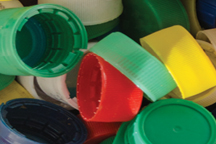 Polypropylene (PP)
Polypropylene (PP)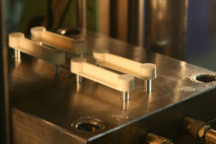 Polystyrene (PS)
Polystyrene (PS)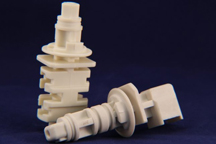 Polysulfone (PSU)
Polysulfone (PSU)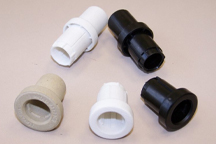 UHMW
UHMW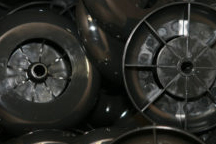 Polyetherimide (Ultem)
Polyetherimide (Ultem)